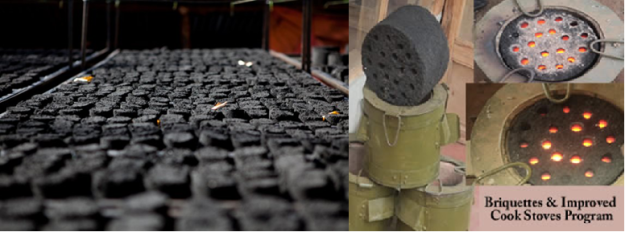Simon Batchelor from Gamos writes on the recently-released Guidelines to Clean Energy document for SAMSET.
As a part of our ongoing work with Sub Saharan Municipalities in Uganda and Ghana, the research team have brought together some basic information on clean energy transitions. “GUIDELINES TO CLEAN ENERGY:- A PRACTICAL GUIDE FOR SUB SAHARAN AFRICAN MUNICIPALITIES (2017)”. The Guide is intended to help decision makers in Municipalities in Sub Saharan Africa to consider ways in which they could make their city utilize cleaner energy. Its foreword states “This manual has been designed for use by city officials and planners working in sub-Saharan Africa. It is a practical handbook, which identifies easy to achieve energy interventions that will save money (for cities, businesses and households), promote local economic development, and enhance the sustainable profile of a city. This manual is specifically aimed as a support tool to achieve the implementation of key interventions within municipalities across sub-Saharan Africa.”
The 200 page document starts with a call for cleaner energy. Its opening chapter draws on various sources to show how our ongoing use of fossil fuels is linked to climate change. The historical contribution of Sub Saharan Africa to global climate change is small compared to the developed countries, however over the next 30 years it will increase its contribution particularly if ‘Business as Usual’ is continued. The opening chapters discuss how this global problem is the responsibility of all, and how municipalities could take a decision to move towards clean energy that might contribute to climate change mitigation in the long term.
The guide, however, is titled ‘A Practical Guide’ and we felt it important to move quickly on from the macro picture of global challenges to the specifics of what a municipality might do. Each of the chapters has the same format –
- An overview, which includes some basic description of technology and social change options;
- The Case; which discusses how simple changes can make considerable differences
- Potential for Rollout; discussing the realities of Sub Saharan African life and whether the technology could be introduced
- Barriers to implementation (and effort to resolve); an attempt to anticipate barriers, and suggestions of what might be done
- How to go about implementation; some suggestions for action
- Case Studies; some Sub Saharan African case studies to illustrate the relevance and possibilities of the chapters subject.
Chapter 5 starts with Energy efficient lighting a technology that is relatively easy to implement. LED bulbs have become common and simple action ensuring they are available in the market and ‘encouraged’ among consumers can save significant amount of electricity (compared to older lamps). Chapter 6 broadens the picture to include energy efficient buildings.Ideally these need some design at the very start, but the chapter also makes suggestion for retrofitting that can lower energy consumption. Chapter 7 considers public transport. Vehicles can not only consume considerable amounts of fossil fuel, but create localized pollution. The chapter focuses on the possibilities of public transport as an alternative to everyone getting their own car. Chapter 8 considers cooking. While it may seem that municipalities have little to say about the choice of domestic cooking fuels, the ongoing use of biomass (charcoal) in urban areas contributes to local pollution, kitchen pollution and global pollution. Municipalities can undertake various strategies to assist consumers to move toward genuinely clean cooking.
Waste to energy in Chapter 9 is very much a municipality concern. Collection of waste is a challenge to many SSA municipalities, and the possibility of converting it to useful energy is worth consideration. Chapter 10 talks about Solar Photovoltaics. Solar PV has come down in price considerably over the last few years and this chapter discusses the possibilities – from solar farms contributing to the national grid, to mini and micro grids, to solar home systems.
Renewable purchase agreements are a policy tool that can encourage clean energy. Chapter 11 discusses these, pointing the municipality players to consider the policy instruments available in their country. Chapter 11 touches on carbon trading – this again is effectively a policy instrument that municipalities might consider using. And finally , a last chapter summaries but does not deal in depth, some ideas on Concentrated Solar Power, Wind Power and Solar Water Heaters.
The guide ends with a call to action, to share ideas with colleagues, and to take small steps that help us tread lightly on the earth. “We may have discussed many ideas, technologies, approaches, regulations, policies, feed in tariffs, low energy light bulbs, and energy efficient buildings among others, but ultimately consumption and sustainability come down to you. Humanity has a large footprint on this world and currently we are not treading lightly. We consume; we consume fossil fuel, we create so much impact that our climate is changing, we build cities that can be seen from space; we are heavy on the earth.”



